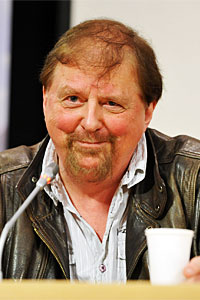The recovery of the city of Kherson is the third big victory for the Ukrainian armed forces in three months: first, the reconquest of all of Kharkiv Oblast in September, then the partial destruction of the Kerch Strait Bridge linking Crimea with Russia in October, and now the liberation of Kherson. So where next?
The decisive factor in shaping this war has been the small numbers of troops engaged on either side. When the Nazi and Soviet armies were waging their titanic battles back and forth across Ukraine in 1941-43, there were several million soldiers fighting on each side, with tanks, planes., and artillery to match.
Once a breakthrough occurred, in those conditions, the front could move hundreds of kilometres before it settled down again. Many cities changed hands not once or twice but four times. This time around, it's very different: the armies have got small again.
The Russians invaded last February with fewer than 200,000 men. Even now, after considerable reinforcements but also large losses, their army in Ukraine is 250,000 at most. Ukraine's army has grown at least as fast, but from a much lower starting point, and probably now has about the same number at the front.
The problem is that the "front", the line of contact between Ukrainian and Russian troops, is about 1,000 kilometres long. That means that each side has an average of only 250 soldiers per kilometre, or one for every four metres.
In reality, more than half these soldiers will be behind the front manning artillery, driving trucks with supplies, staffing field hospitals and so on, so the men at the actual line of contact are spread out to around one every ten metres.
Allowing for the fact that the Ukrainian front was actually much shorter for most of World War II -- it was usually a relatively straight line, not drawn out in a great U-shaped curve like the current line of contact -- we can safely say that the density of manpower per kilometre of front was ten times higher then than it is now.
This has major implications for the way the current war is fought. The front is manned so sparsely that it is fairly easy to get a breakthrough -- but the attacking forces are also much smaller, so they can only hope to hold the new ground they have gained if they stop their advance fairly soon.
We saw this factor in play in the Ukrainian northern offensive in September. They managed to lure a lot of Russian troops away by feigning a major offensive on Kherson (then still Russian-occupied) in the south, and their attack in the north took the Russians completely by surprise.
The Ukrainians quickly advanced about 75km on a broad front -- and then they stopped, although the Russian troops in front of them were still fleeing. They were spreading themselves too thin, and making themselves too vulnerable to even a modest Russian counter-attack.
The great offensives of 1941-43 advanced hundreds of kilometres before they stopped, but those were different days. The Ukrainian army has the upper hand, but its offensives will continue to take modest bites out of the Russian positions rather than concluding in some dramatic and sweeping move that ends the Russian occupation.
So where will they attack next? Certainly not from newly liberated Kherson across the Dnipro River: it would cost too many lives to cross under fire. The Russians have been adding fortifications on the eastern front in Donetsk and Luhansk for almost a decade, and an offensive there would also be a slow and painful business.
There may soon be a significant further Ukrainian advance in the far north of the line, building on the success of the September offensive, but that would probably be mainly an attempt to draw Russian forces north.
The next real strategic target for Ukraine will almost certainly be a drive from the region of Zaporizhzhiye south to the Black Sea coast. That would leave all the Russian forces in Crimea and what's left of Kherson province totally dependent on supplies coming across the badly damaged Kerch Strait Bridge from Russia.
Starve them out, and Ukraine will have recovered almost all of its pre-February territory. That's the point at which negotiations would finally become possible. Many different peace deals would then be possible.
If the Russian army actually collapses -- unlikely, but certainly imaginable -- then the borders would all go back to the pre-2014 map. If it's still standing, then maybe Ukraine gives up the Donbas in return for recovering Crimea, or the other way around, or perhaps it has to accept merely to a return to the pre-February 2022 status quo.
The course of the fighting will decide which option actually materialises.
Gwynne Dyer is an independent journalist whose articles are published in 45 countries. His new book is 'The Shortest History of War'.
